
DublinIreland
Your preferences100%540.000
Euro
Irish & English
- Price range
- Travel period winter
- Travel period spring
- Travel period summer
- Travel period autumn
Already have an account? Login
No account yet? Sign up
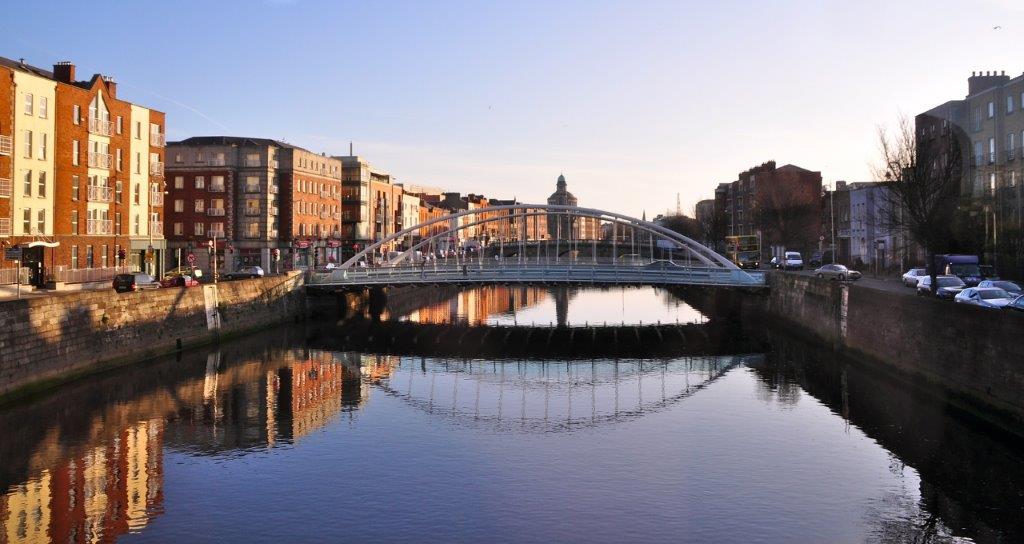
Dublin is the capital of Ireland and has a turbulent history. The first inhabitants of Ireland were the Vikings. In the past, the country was for a long time in the hands of the English who ruled with a hard hand. After WWI, a civil war broke out that ended in the middle of the 20th century with the independence of most of Ireland, including Dublin.
In Dublin you'll find many sights that will tell you more about the special history of the country and the city. These include Dublin Castle, Trinity College and Kilmainham Gaol Prison. The city also has a special atmosphere and numerous Irish pubs where you can enjoy Irish whiskey and black Guinness beer.
Dublin is a young and lively city where shopping and nightlife are excellent. Irish cuisine is in full development and there are many nice restaurants. Also the nature in the area is beautiful and you can get a breath of fresh air or sunbathe on one of the beaches nearby. In short, Dublin is a popular destination for a city trip for a day, weekend or full week.
Do you want to go on a city trip to Dublin for a day, weekend or week? Want to know what's on in Dublin? The characteristics of Ireland's capital city are listed in the table below. In this article we've listed Dublin's most popular sights for you.

|
City trip Dublin characteristics |
|
| Land | Ireland |
| Dublin population | 0.54 million |
| Number of international tourists per year | 2.4 million |
| Flight travel time (direct flight) | 1 hour and 40 minutes |
| Currency | Euro |
| Language | Irish & English |
| Time difference with the Netherlands | In Dublin it's 1 hour earlier |
| Price level | Average |
| Distance from Utrecht | 950 kilometers |
| Best travel period | Lente, autumn |
| Climate | Moderate maritime climate |
| Activities | City, culture, art, nature, history, shopping, beach |
During a city trip, a visit to Dublin's largest castle should not be missed. Dublin Castle has a special history. For more than 700 years it was the building where the English ruled over Ireland. Today the Norman castle is owned by the Irish government and is used for state affairs and state visits. The castle was built in the 13th century on the ruins of an old Viking castle. Due to a number of major renovations, only the round Record Tower is still original. This tower houses Dublin's police museum: the Garda museum.
You can visit Dublin Castle with a guide. A guided tour will take you to the State Apartments, the old Chester Beatty Library, the Chapel Royal and the Undercroft. The Undercroft is a crypt where you can see parts of the old Viking castle and the original Normandy castle.
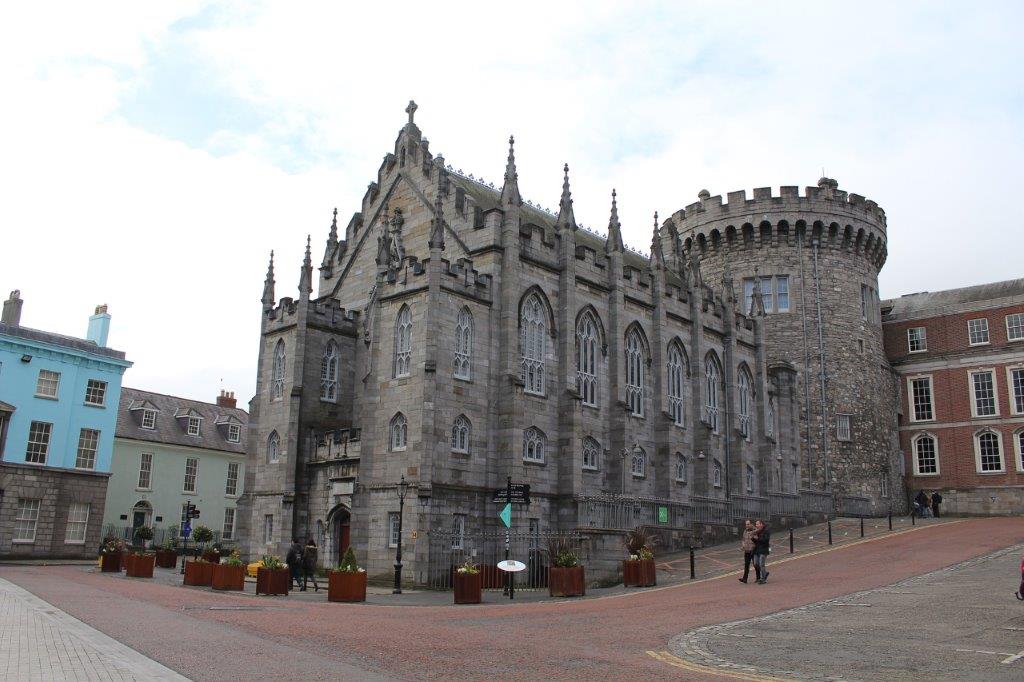 Dublin Castle
Dublin Castle
A special monument in the Irish capital is the Spire of Dublin. This is a 120 metre high work of art in stainless steel. The monument stands on the former site of Nelson's Pillar. This 40-metre high pillar of honour with the statue of Horatio Nelson was destroyed by the IRA in 1966. The construction of the Spire of Dublin was part of the redevelopment of O'Connell Street. The monument is a striking eye-catcher in Dublin. In the evening, the top of the 'Torenspits' is beautifully lit.
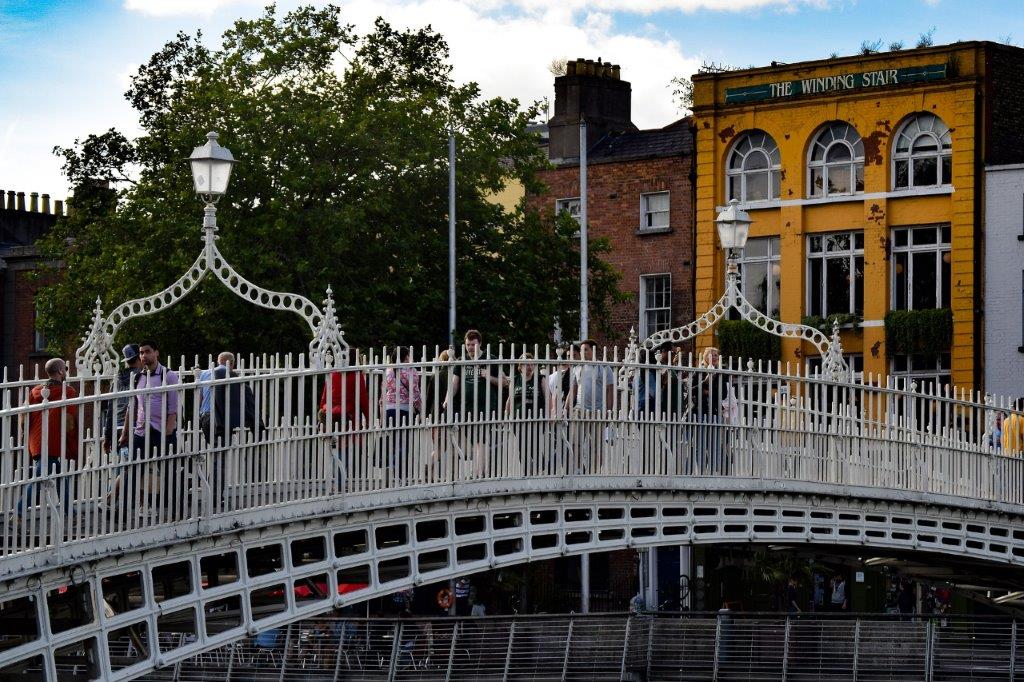 Ha'Penny Bridge
Ha'Penny Bridge
In Dublin city centre there are two major Anglican churches: St Patrick's Cathedral and Christ Church Cathedral. St Patrick is the patron saint of Ireland. St. Patrick's Cathedral is the patron saint of Ireland. St. Patrick's is said to have converted many Irish to Christianity in the 5th century at the spring under St. Patrick's Cathedral. The stone that covered the well can be seen in the church. There is also an exhibition about the life of St. Patrick. The cathedral is also home to the famous deceased writer Jonathan Swift.
Christ Church Cathedral is Dublin's oldest building and one of the city's most popular sights. The original church was built around 1172. In the 19th century the church was extensively renovated and the 'Bridge of Sighs' was added. This bridge connects the church with Synod Hall. Here you'll find an exhibition about the history of Dublin. In the cathedral you'll find a monument of Strongbow (Richard de Clare), an old crypt with relics, historical manuscripts and silver and gold church treasures.
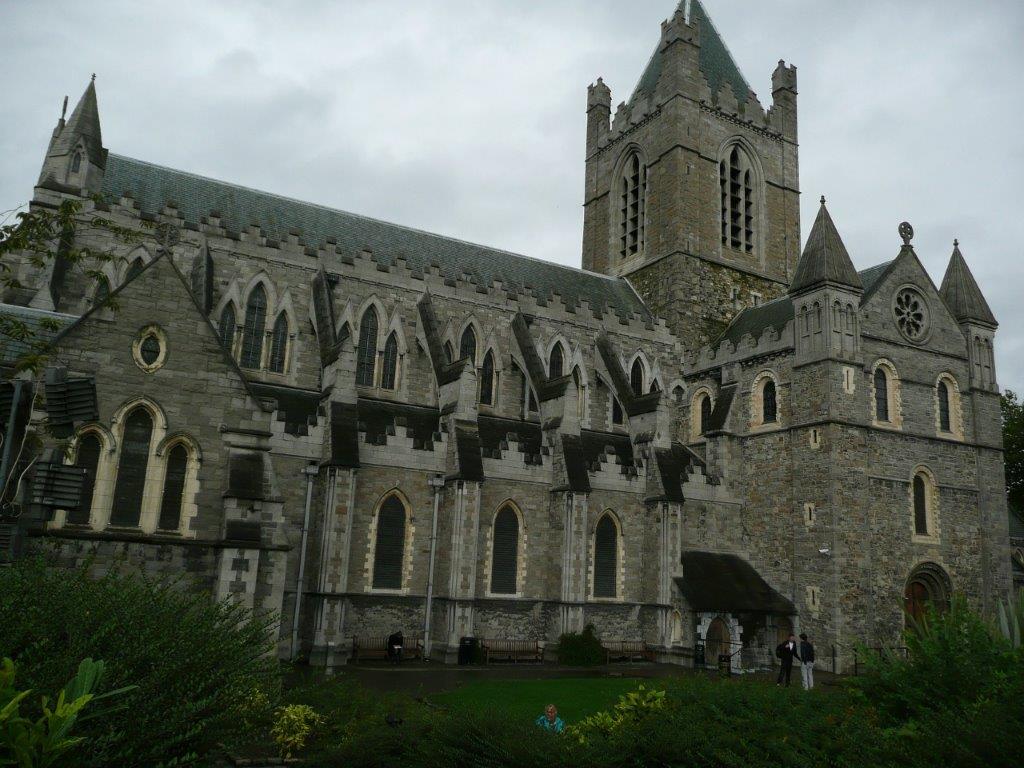 Christ Church
Christ Church
Trinity College is the oldest and most famous university in Ireland. It was founded in 1592 by Queen Elizabeth I of England. Famous alumni of Trinity College are the writers Jonathan Swift, Oscar Wilde, Bram Stoker, the first president of Ireland Douglas Hyde and the Irish philosopher and politician Edmund Burke. You can visit the campus, even if you're not studying at the university. Some recommendations are
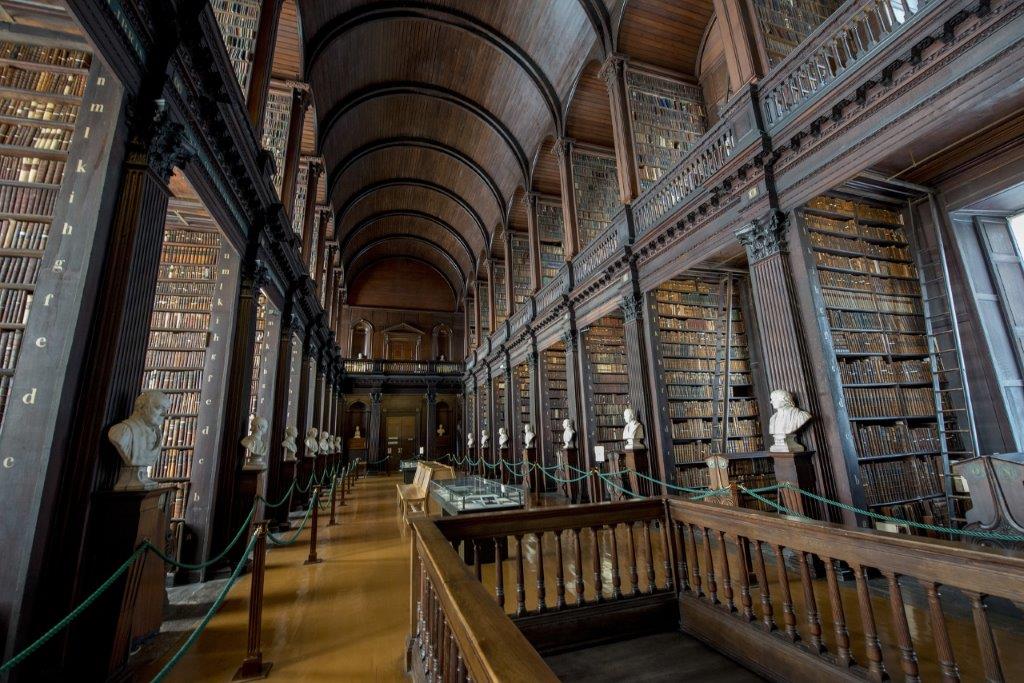 Trinity College
Trinity College
One of Dublin's most notable attractions is the Kilmainham Gaol Prison. Between 1796 and 1924 many thieves, murderers, criminals, but also poor city dwellers, children and independence fighters were imprisoned and executed in this building. It is claimed that the old prison was haunted. The prison is now a museum. You'll find out what it was like in those days. Enter a damp dark cell, visit the torture and hanging rooms and the central hall and walk through the chilly corridors.
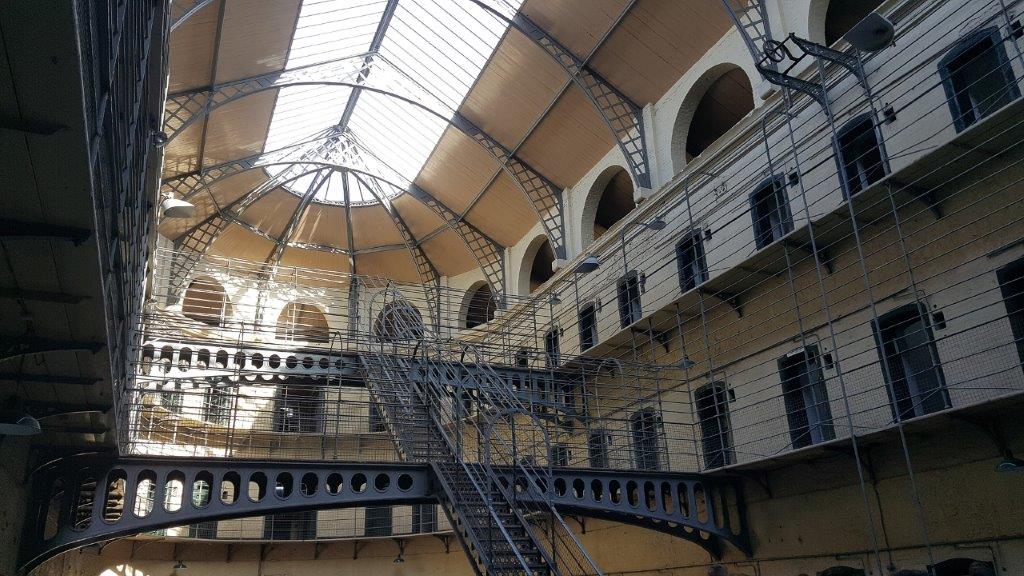 Kilmainham Gaol
Kilmainham Gaol
A place with a lot of history is the Victorian Cemetery Glasnevin Cemetery. A walk around the iconic cemetery is certainly worthwhile. At the Glasnevin Museum you'll find out more about Irish history and various Irish heroes.
The Guinness Storehouse Factory is one of Dublin's most popular attractions. Here you'll find out all about Ireland's most important export product: the black Guinness beer. The old brewery will take you on a journey through 250 years of Guinness history. The journey ends at the Gravity Bar with a free pint. Here you'll enjoy a magnificent view over Dublin. In the Guinness Storehouse you'll also find a restaurant. Here you can order traditional Irish dishes. Of course while enjoying a pint of the jet-black beer.
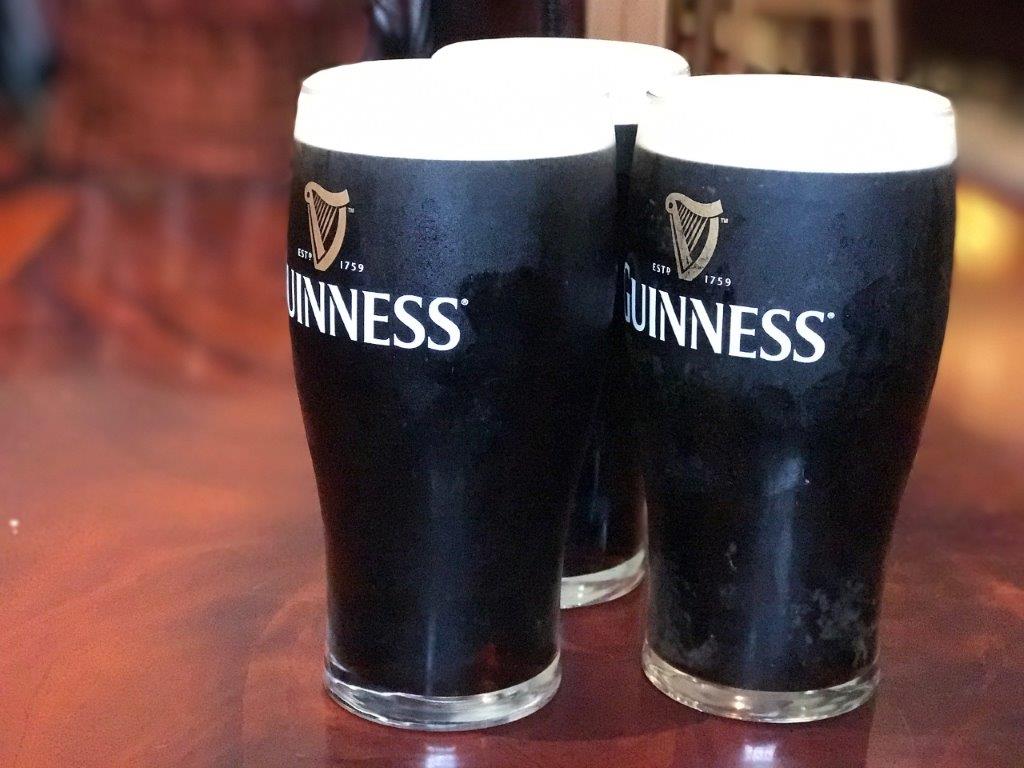 Guinness
Guinness
Ireland is known for its many kinds of Irish whiskeys. For whiskey lovers Dublin has a lot to offer. Of course you can drink whiskey in Dublin's many pubs. There are also several whiskey distilleries in the city. A must is for example the Old Jameson Whiskey Distillery. Here a guide will take you through an old distillery and you will discover everything about the distillation of whiskey. After the tour it is time to drink the famous Irish whiskey. In the pub JJ's you can have a drink if you want.
Another must-see on your city trip to Dublin is the Irish Whiskey Museum. This museum houses an exhibition on the history of Irish whiskey. A guide will lead you through the museum with over 200 years of whiskey history. The tour ends with a whiskey tasting in the bar of the museum.
Dublin has a number of beautiful parks. Phoenix Park is the largest park of the city and is located west of the city centre. The park even belongs to one of the largest city parks in Europe with an area of more than 700 hectares. Originally it was a royal hunting ground. In 1747 Phoenix Park was opened to the public. Across the park runs Chesterfield Avenue. The street is beautifully lit at night with old-fashioned gas lamps. The park is crowded by locals as well as tourists. Cricket, polo, baseball or soccer is played regularly and there are often open air concerts. The visitor centre is located in Ashtown Castle.
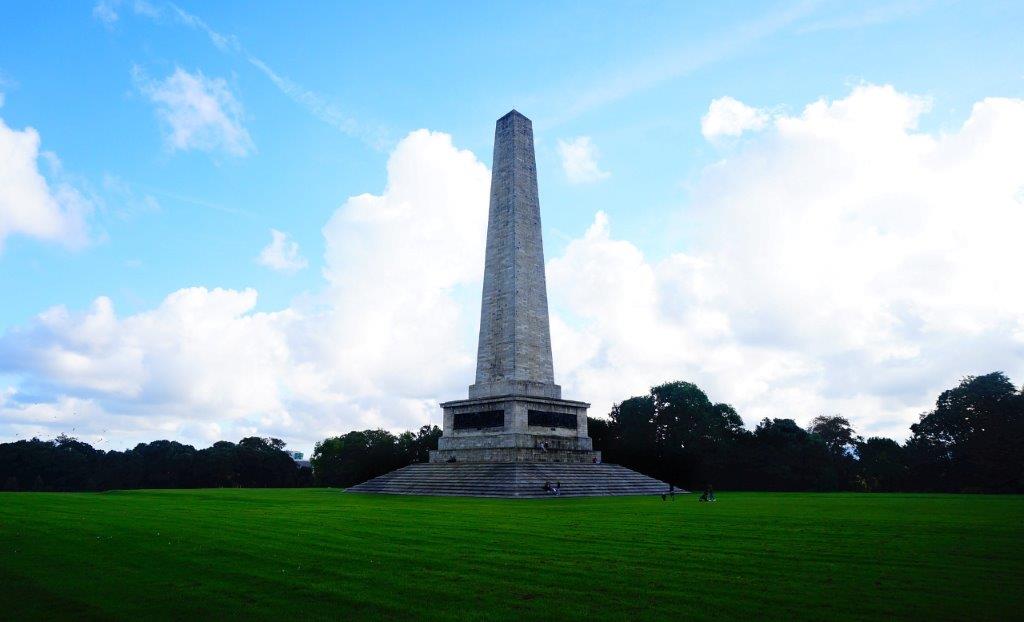 Phoenix Park
Phoenix Park
Dublin Zoo opened its doors in 1830. A special piece of history where you can admire all kinds of different animals. Fun fact: one of the lions of the Dublin Zoo was depicted for a long time on the logo of the American film company MGM.
The Dublin Flea Market is a popular flea market. Every last Sunday of the month it is an attraction for locals and tourists alike. You can buy all kinds of things there. Think of old LP's, books, clothes, furniture, jewelry and much more. There are also several food and drink stalls on the market. If you're going on a city trip to Dublin in December, a visit to the Dublin Flea Christmas Market is highly recommended. Two long weekends in early December, the market is all about Christmas.
As well as the large Phoenix Park, Dublin has even more green sights worth visiting. For example, Dublin city centre is home to St. Stephen's Green. This park was decorated in Victorian style to attract Dublin's wealthy families. The park is surrounded by beautiful Georgian houses. In St. Stephen's Green you'll find all sorts of trees, shrubs, plants and flowers, a central fountain and a beautiful pond full of swans. There are also several lawns for recreation and the park is rich in monuments. Very special is the fragrant plant and flower garden especially for the blind. The park is a popular recreational spot for locals and tourists.
Another green attraction in Dublin are the National Botanic Gardens. The gardens contribute to various initiatives for the preservation of biodiversity and sustainable development. More than 20,000 plant species can be admired here. There are also regular exhibitions, workshops and lectures.
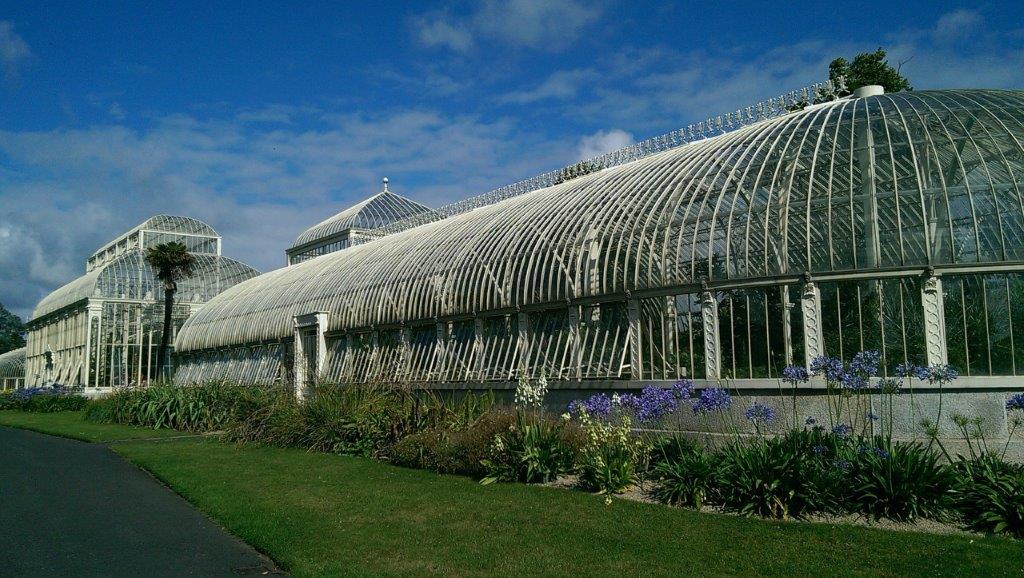 Botanic Gardens
Botanic Gardens
Ben just a day on a city trip to Dublin, you'll probably spend all your time exploring the city. Going on a city break to Dublin for a weekend or week? Then it's highly recommended to take a trip to the Wicklow Mountains or to the Cliffs of Moher. Wicklow Mountains National Park is a mountainous nature reserve south of Dublin. Here you can go hiking, rafting, fishing and cycling in the Irish countryside. Popular spots in the nature reserve are the visitor centre, the monastery ruins of Glendalough, the Powerscourt (highest waterfall in Ireland) and the Powerscourt Gardens.
On the west coast of Ireland lie the cliffs of Moher. These limestone cliffs are over 200 metres high and stretch for 10 kilometres. You can book a tour from Dublin to the Cliffs of Moher, the nearby Burren National Park and the historic town of Galway. You'll be more than 2 hours by bus to the cliffs, but you'll get an unforgettable experience in return.
Dublin is not known as a sun destination. Nevertheless, the weather can be excellent in the Irish capital. And then it's a good idea to visit one of the beaches. Some well-known beaches are:
On the beaches you can sunbathe and swim when it's hot. And when the weather is a bit colder, it's also great to get a breath of fresh air, take a walk on the beach and look for shells.
Dublin has several restaurants in different price ranges. Especially in the centre you can have lunch or dinner. The Irish cuisine is a bit special and not really comparable to the food in many other European cities. In the past, Ireland has experienced periods of food scarcity and this can be seen in the dishes. For a long time there were mainly potatoes, leek and lamb on the menus. Fortunately, nowadays there is more and more choice. Think of fish and shellfish and Irish beef. There are also more and more international dishes on the menu. In short, Irish cuisine is in full development.
You might not think of Dublin as a shopping city. But it's a great place to shop. Grafton Street is a well-known shopping street with department stores including H & M and Mark & Spencer. Also in South William Street and O'Connell Street you'll find a lot of nice shops. And then there is the large indoor Stephen's Green Shopping Centre at the park of the same name.
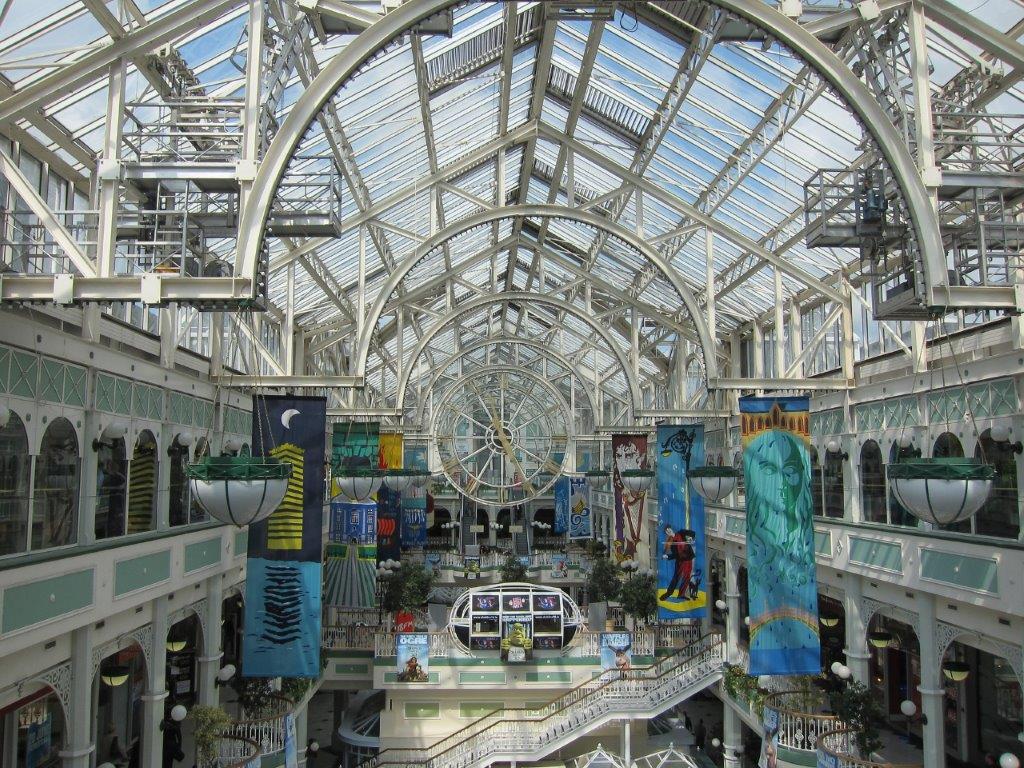 Stephen Greens Shopping
Stephen Greens Shopping
Markets are also held regularly in Dublin. Here you can buy all kinds of stuff, such as food, second-hand items and clothing. Dublin is a fairly young city. More than half of its inhabitants are under 30, so it's no surprise that Dublin's nightlife is very lively. There are countless modern and traditional Irish pubs and trendy clubs where you can enjoy the cosiness all night long.
Most clubs can be found in the Temple bar area. The best known pub there is the Temple bar pub and a crowded club is the Button Factory. The areas around Harcourt Street, Camden Street, Leeson Street, Dame Street and George's Street are also bustling at night.
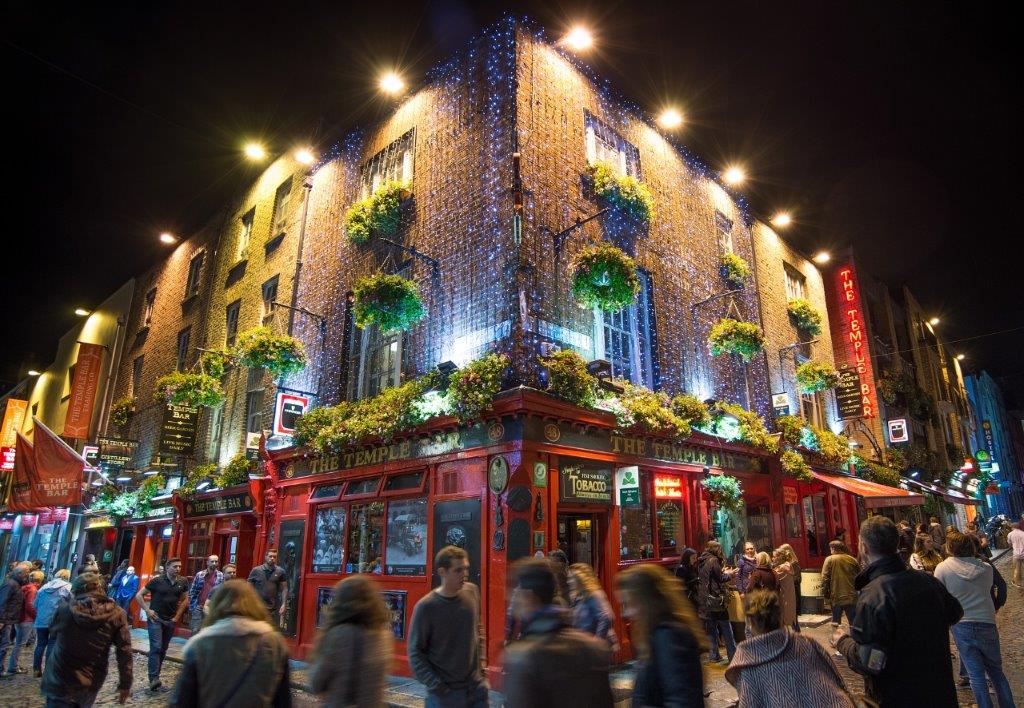 Temple Bar
Temple Bar
In Dublin you can stay overnight in a hotel. In Dublin, you can choose between a simple and luxurious hotel. In general, there are plenty of hotels in the city and there's plenty of room. Exception is if you want to go on a city trip to Dublin during St. Patrick's Day (mid-March). In that case it's wise to book a hotel in Dublin at least six months in advance.
For an average hotel in Dublin you'll lose around €50 per night. You can also choose a hostel. From as little as €10 you can book a room in a hostel. Of course it is also possible to choose a bed & breakfast or stay at a campsite. Just outside the city is a campsite with a beach: North Beach.
On a city trip to Dublin? For a city trip of a day or long weekend in Dublin, the airplane is the preferred means of transport. From several Dutch airports you will fly in about 1.5 hours to the capital of Ireland. Dublin Airport, Dublin Airport, is located 10 kilometres north of the city centre. By bus or taxi you'll be in the heart of Dublin within 15 minutes. Once in the city, the best way to get around is by bus or the Dublin Area Rapid Transport (tram). And the leg wagon will take you a long way too. You can also rent a bike.
By train or car on a city trip to Dublin is possible, but it is quite a journey. You are about 15 hours away by car and have to cross both the English Channel and the Irish Sea. By train you even have to count on about 20 hours. You have to go via Glasgow.
Dublin is a friendly and atmospheric city with special sights, cosy pubs, restaurants and clubs, lots of shops, beautiful nature and excellent accommodations. In short, Dublin has everything you need for an unforgettable city trip of a day, weekend or full week.